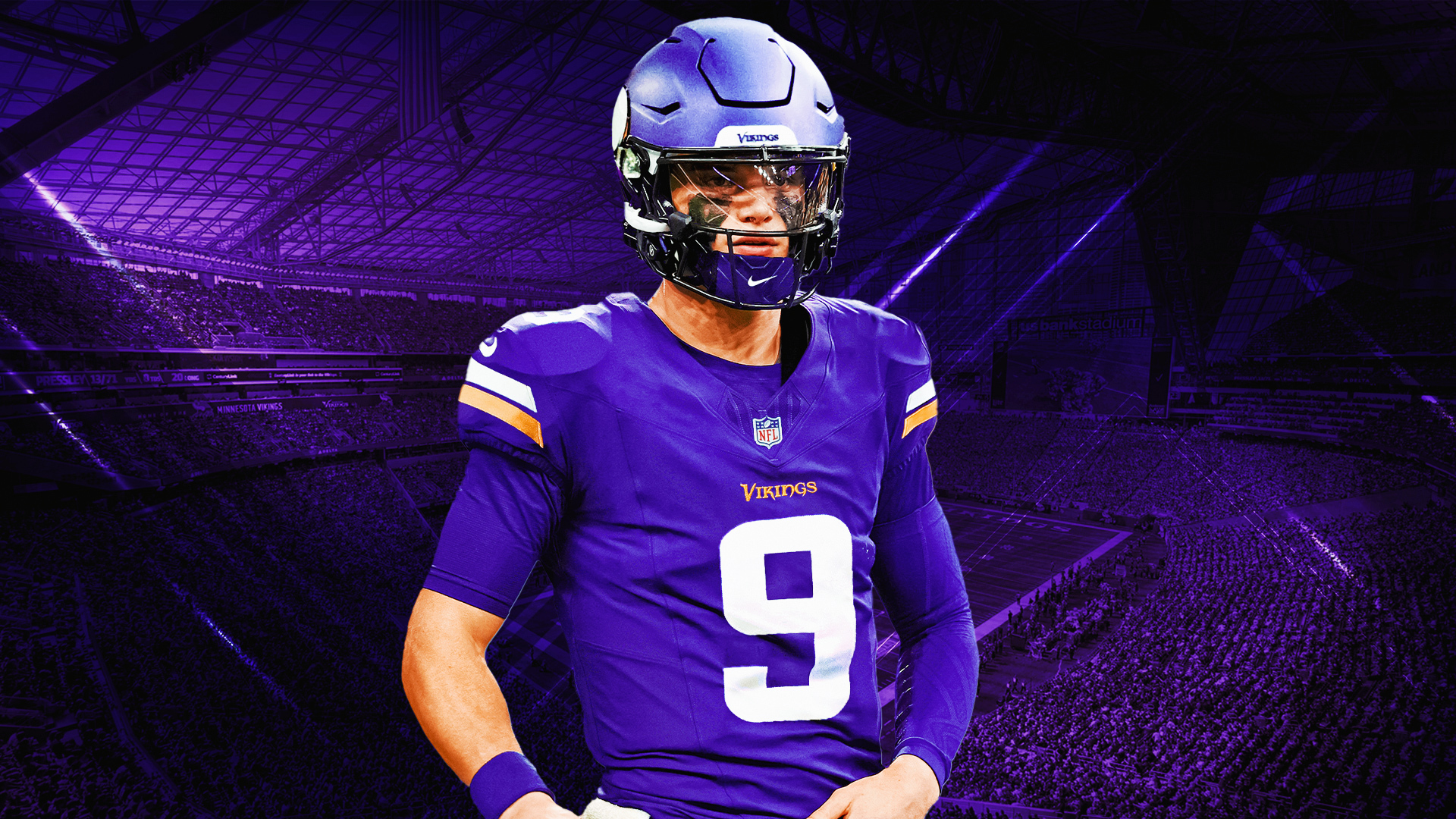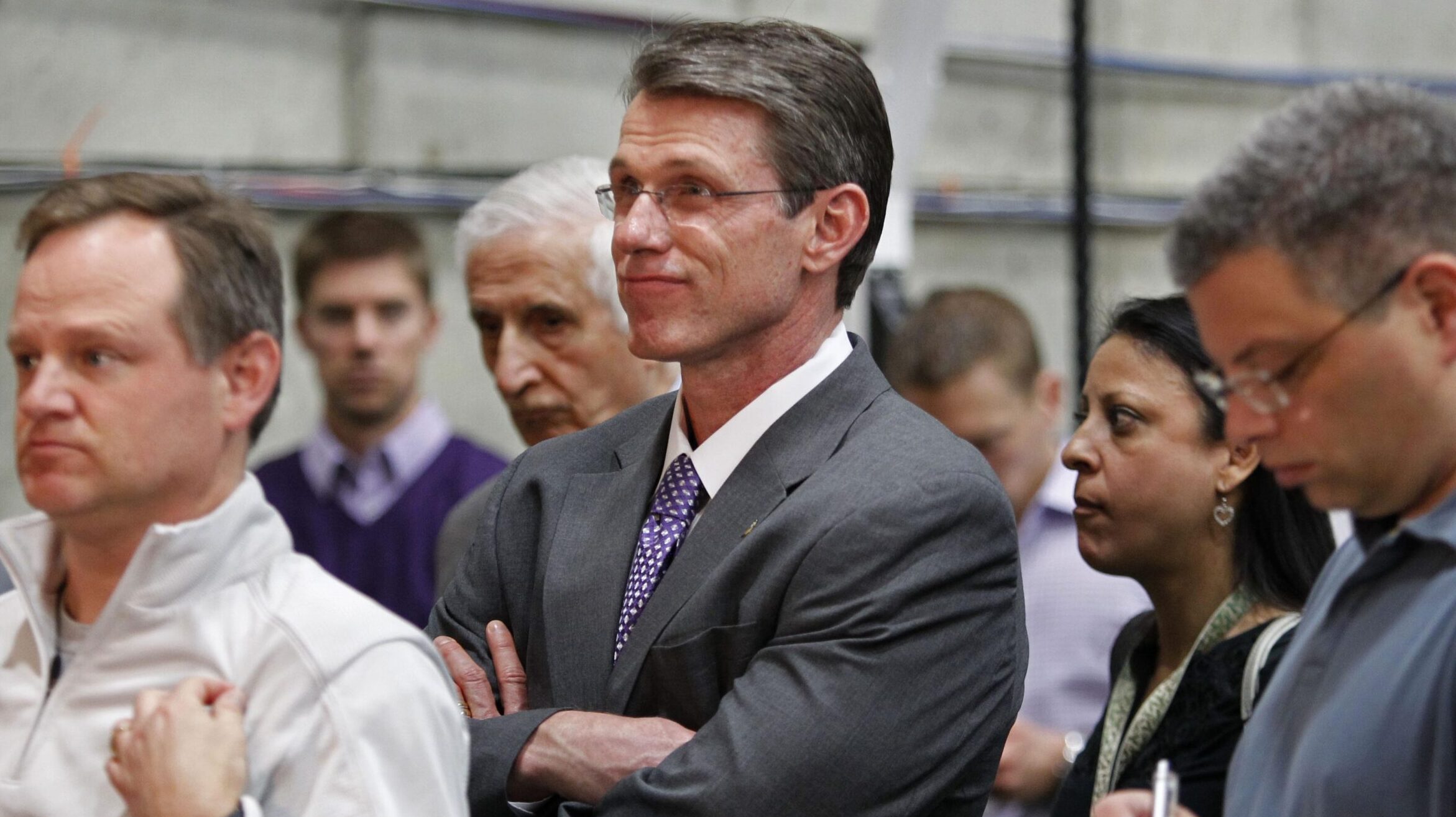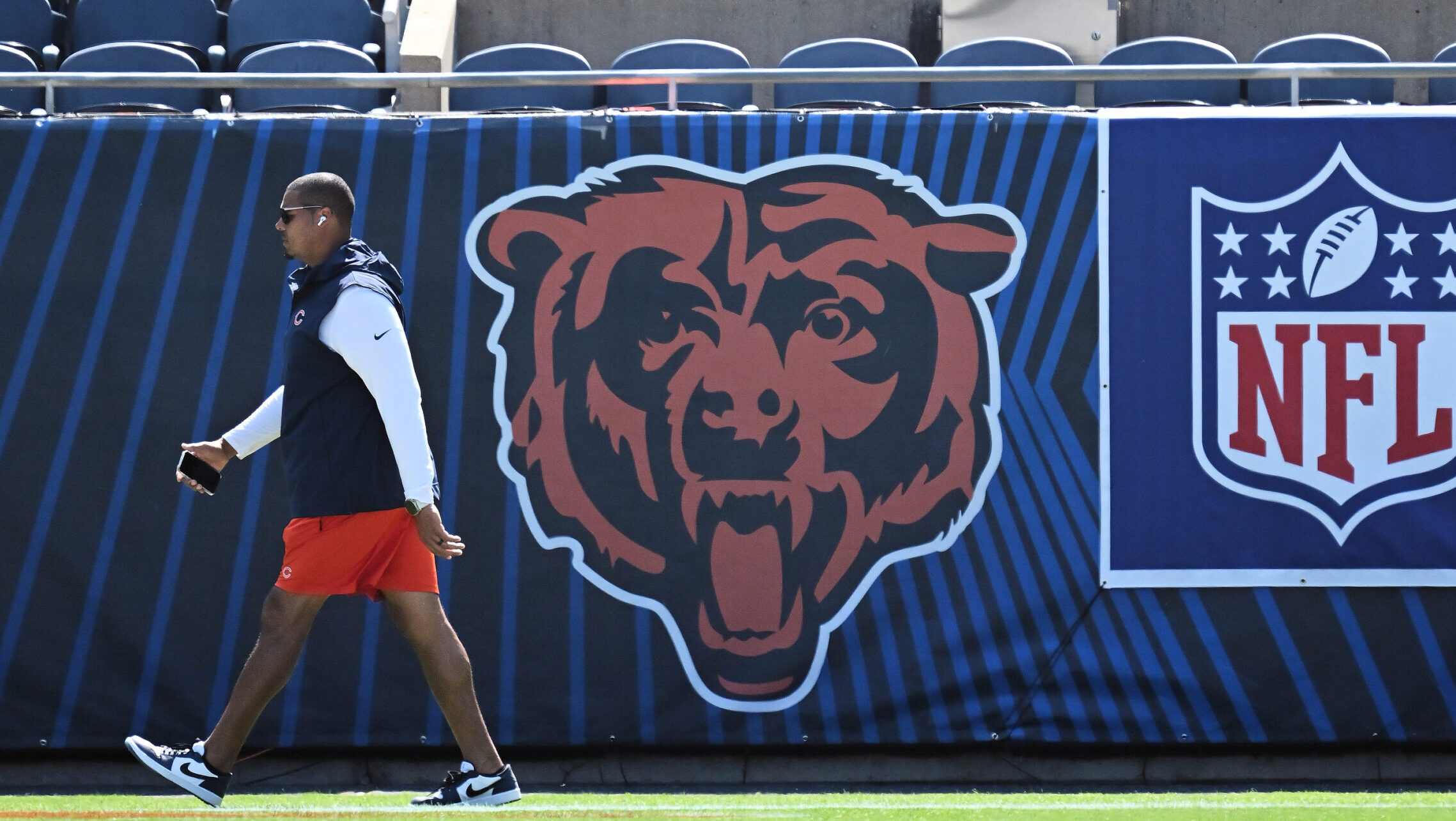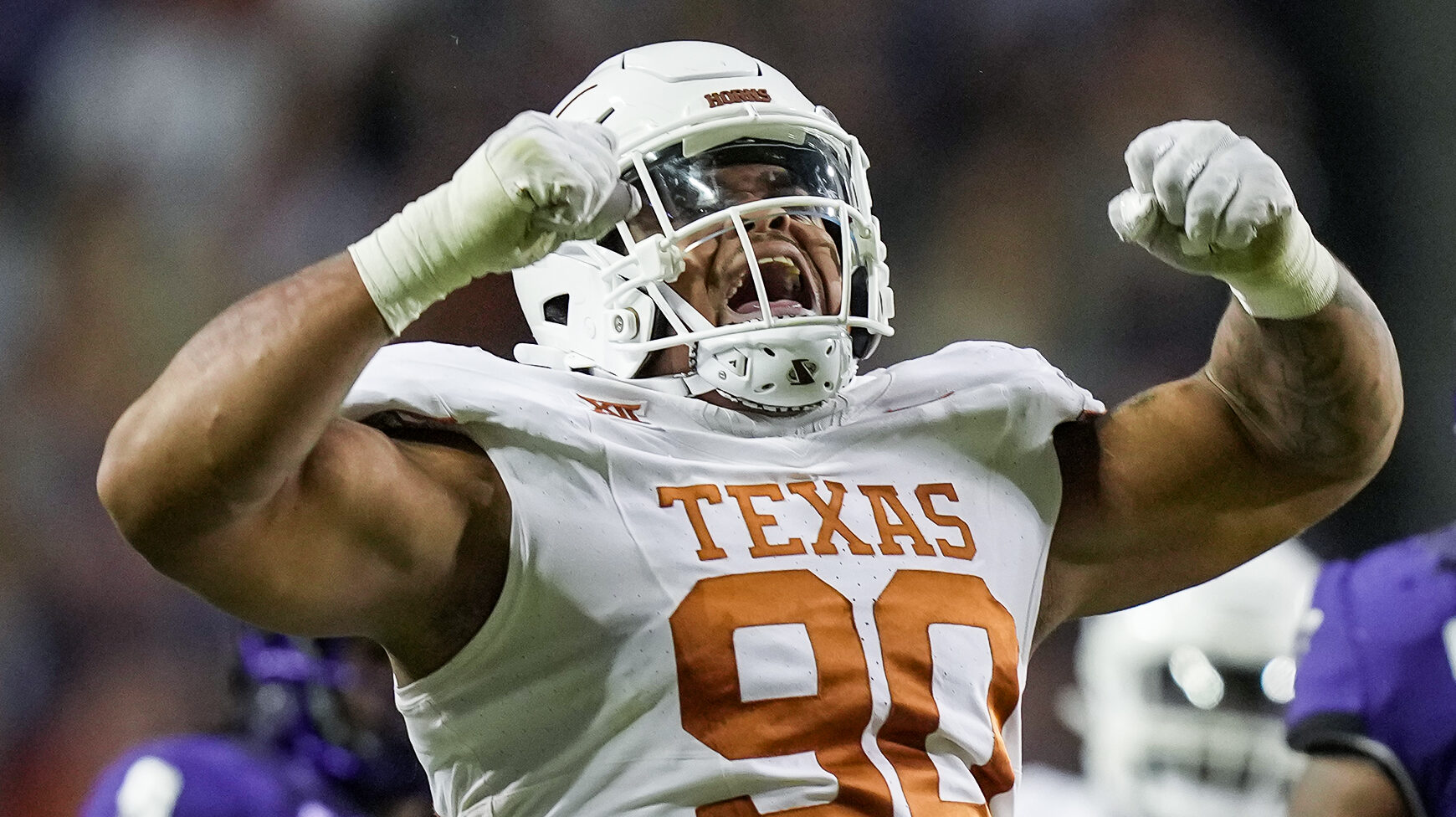Analysis
6/17/22
8 min read
Can the 49ers Provide a Formula to Overcome Their OL Issues?
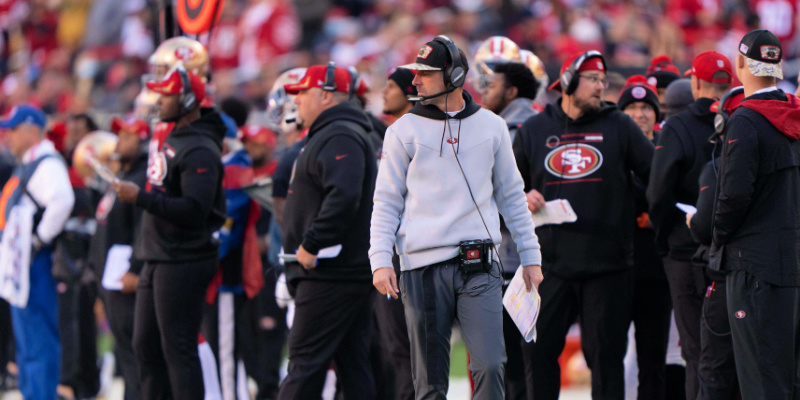
To what an extent can an NFL team compete despite the significant albatross of having a bad offensive line?
It is a difficult question to answer, and one that has come into focus in recent times as teams, namely the Cincinnati Bengals in the 2021 draft, have eschewed addressing offensive line issues with premium capital in favor of adding elite talent at other positions.
Even with an offensive line that was 31st in the NFL in Football Outsiders Adjusted Sack Rate and surrendered nine sacks in their Divisional Round win against the Tennessee Titans, the Bengals still managed to reach Super Bowl LVI.
Yet it was a capitulation by their offensive line against Aaron Donald and Co. in the Super Bowl that ultimately prevented the Bengals from claiming a first Lombardi Trophy in franchise history.
So, a better question may be: how can teams overcome specific issues on the offensive line?
There is a potential test case we can examine ahead of the new season, with the San Francisco 49ers set to head into 2022 with the interior of their offensive line looking shaky.
The Niners possess the premier left tackle in the game in Trent Williams and a solid starter on the right side in Mike McGlinchey. However, following veteran center Alex Mack’s retirement, the Niners lack convincing options on the inside.
Jake Brendel is the favorite to start at center. He has started just three games in his NFL career, which game during the 2018 season for the Miami Dolphins.
Brendel fits the athletic profile the Niners want for the position. Still, he can at best be considered unproven, and the same can be said of likely starting left guard Aaron Banks. Last year’s second-round pick saw minimal action as a rookie but is set to be tasked with stepping in for Laken Tomlinson. Tomlinson left in free agency to sign with the New York Jets.
At right guard, the often maligned Daniel Brunskill should keep his spot, leaving quarterback Trey Lance playing behind an interior trio that provokes more questions than answers.
The 49ers could be vindicated in putting faith in Brendel and Banks. However, if they struggle, what can Lance and the Niners do to minimize the impact of opposing pass rushers? Using the 49ers as a lens through which to discuss this topic, let’s examine some of the ways offensive line weakness can be negated if not overcome.
Delivering decisively
It can be viewed as an oversimplification and it is hardly a groundbreaking statement to make, but it is one that holds true. The ability to be decisive and get rid of the football quickly can have a huge impact in negating holes on the offensive line.
Lance could take inspiration from Garoppolo in this regard. Garoppolo was sacked only 29 times last year, a career-low in seasons where he has played at least 10 games. While the Niners’ solid offensive line played a role in that number being kept down, Garoppolo also helped his own cause, posting an average time to throw of 2.67 seconds that was the seventh quickest in the NFL, according to NextGen Stats.
A better example of how such decisiveness can offset offensive line struggles is Kirk Cousins. The Vikings’ signal-caller was the eighth-most pressured quarterback in the NFL last season. He was pressured on 26.6 per cent of dropbacks, according to Pro Football Reference. That is in stark contrast to Garoppolo, who was pressured 18.7 percent of the time.
Despite the seemingly porous nature of his offensive line, Cousins, whose time to throw was an expedient 2.76 seconds, suffered just 28 sacks.
Playing in Kyle Shanahan’s offense, Lance should receive plenty of opportunities to be decisive and connect with receivers who have been schemed open. Processing quickly in such scenarios and getting the ball quickly can decrease the impact of offensive line problems, but the desired results are by no means a sure thing.
Indeed, Ryan Tannehill (2.68 seconds) had the ninth-quickest time to throw in 2021 but was sacked 47 times. The only quarterback on the receiving end of more? Joe Burrow, who was sacked 51 times and happened to possess the 10th-quickest time to throw average (2.69 seconds).
Mimicking Garoppolo in delivering the ball efficiently is a step Lance can take to atone for protection issues in front of him. Yet it doesn’t matter if you get the ball out in 2.5 seconds if Aaron Donald is already in your lap in one. And, given the Niners will more often rely on longer developing downfield plays to take advantage of Lance’s superior arm strength, they may need to do more to ensure he is not hamstrung by his O-Line.
Changing the launch point
There is a balance to be struck with young dual-threat quarterbacks between making the most of their athleticism and developing them as pocket passers at the highest level.
Getting quarterbacks outside of the pocket can be beneficial for inexperienced signal-callers as it gives play-callers the opportunity to cut the field in half and present more defined reads.
For the purposes of their development, quarterbacks also need experience processing full-field reads. However, the flexibility to change a quarterback’s launch point can have distinct advantages in negating pass rush, particularly pressure that comes from interior defenders, many of whom are unlikely to have the athleticism to chase players like Lance across the field.
The Niners have already enjoyed success on designed plays where Lance has broken the pocket. This long touchdown to Deebo Samuel off a play-action rollout against the Houston Texans was perhaps the best example from the limited action he saw last year. San Francisco will surely add more such plays to its playbook to achieve the dual aims of minimizing the O-Line's weaknesses and playing to a clear strength of Lance.
While many of the quarterbacks entering the NFL are extremely gifted athletes whose mobility is an asset in limiting the influence of opposing pass rushers, not every passer in the game can operate in such a way.
As a result, they must lean on more traditional means to ensure a flawed O-Line does not derail the entire offense.
Rush to stop the rush
One of the most well-worn cliches in the NFL is that a strong running game is an excellent tonic to an aggressive pass rush.
Yet cliches are labeled as such because they generally prove correct, and there is statistical evidence from last season to suggest there remains significant credence to that school of thought.
Indeed, of the top 16 teams in the NFL by Adjusted Sack Rate in 2021, 10 also finished in the top half of the league in Expected Points Added per rush.
The Niners were ninth in EPA per rush last season and were just outside the top 16 in Adjusted Sack Rate. However, their Adjusted Sack Rate of 6.6 percent was tied with that of the 16th-placed team, the Philadelphia Eagles.
San Francisco’s run game has long since been among the most diverse and the most devastating in the NFL under Shanahan and that diversity will only increase with Lance under center.
If Brendel and Banks prove strong fits for a running game that blends heavy amounts of zone blocking and gap scheme runs as the Niners hope, then they should – theoretically at least – be able to do an even better job of keeping defenses on their heels through a reliance on the run game.
There is no guarantee that will prove to be the case, but the 49ers are gambling on starting inexperienced interior linemen during an era where there are several avenues through which to mitigate perceived weaknesses in the trenches.
The Niners boast a coordinator whose scheme lends itself to quarterbacks decisively delivering the ball to receivers in space and, between Lance's dual-threat skill set and their consistently dominant run game, possess an offensive recipe to keep defenders off-balance.
San Francisco’s is an attack where the quarterback and the skill-position talent can potentially ensure it remains productive even if the O-Line takes a backward step.
With three tackles going in the top 10 of this year’s class, the Bengals’ 2021 success has not prompted a sea change in how teams value the offensive line. The Niners contending having elected not to spend premium capital to fill holes on the interior is similarly unlikely to result in teams de-emphasizing the O-Line.
However, it could herald a subtle but significant change in leading teams to take a more flexible approach to team building and backing their staff and their talent to prevent holes in the trenches defining their season.


